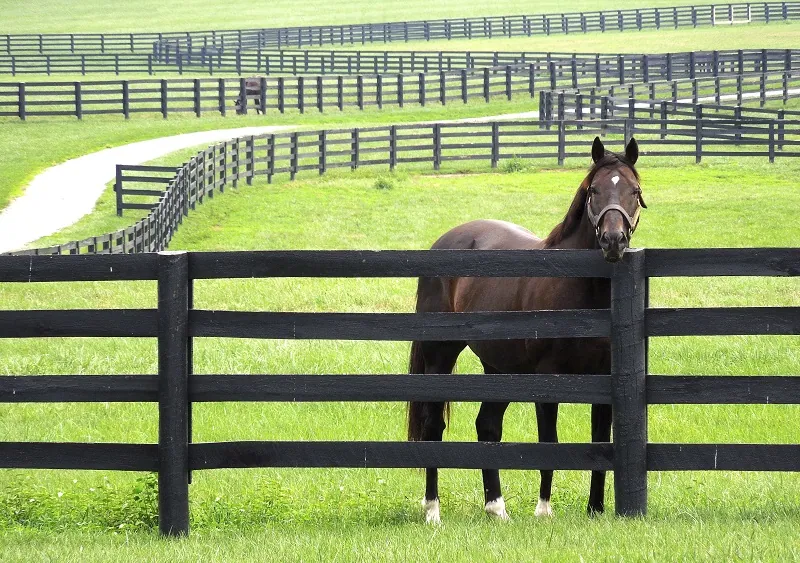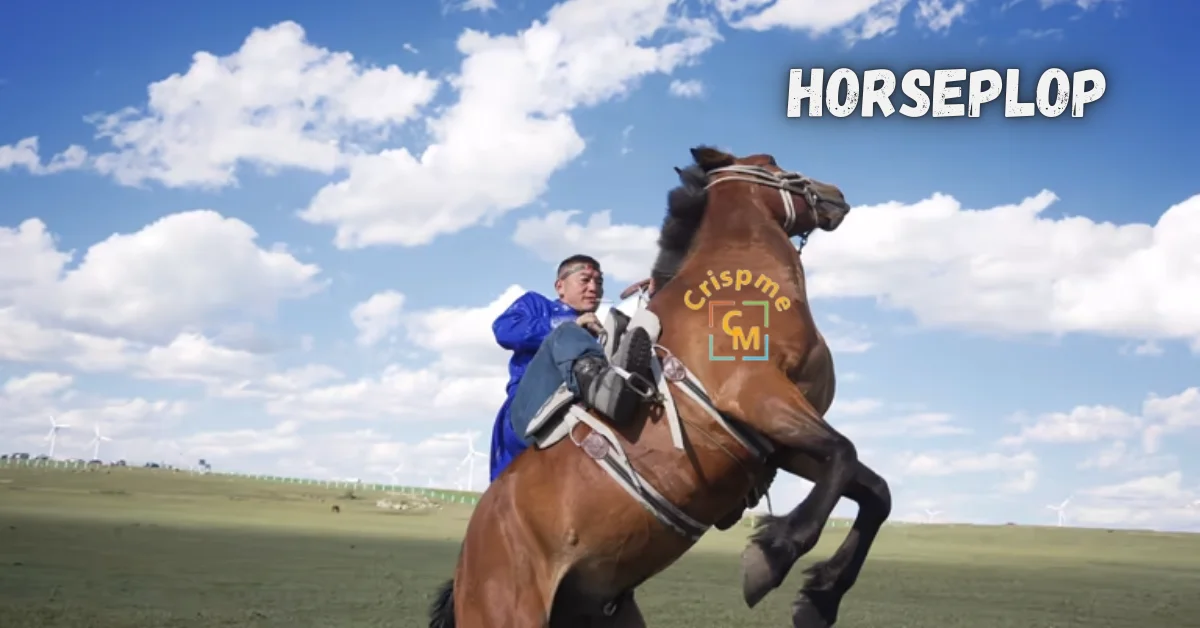GENERAL
Choosing the Right Paddock Fencing for Your Horses: Key Considerations

When providing a safe and secure environment for your horses, choosing the right paddock fencing is crucial. The type of fencing you select directly affects your horses’ safety, comfort, and overall well-being. Additionally, the fencing should be durable, cost-effective, and suitable for your specific environment. We will explore Long Fence post about paddock fencing and the various factors that must be considered when selecting paddock fencing for horses, including the materials used, the height and spacing of the fence, and the overall design that will best suit your horse’s needs. Ensuring that you understand these elements will allow you to make a well-informed choice that prioritizes the safety and happiness of your horses.
Material Selection: Strength, Durability, and Safety
The choice of material for your paddock fencing is a foundational decision that influences the enclosure’s strength, durability, and safety. Common materials include wood, metal, vinyl, and electric fencing, each with unique benefits and drawbacks. Wooden fences, for instance, offer a classic and aesthetic appeal but require regular maintenance to prevent rotting and splintering. Metal fencing, such as wire or steel, is known for its durability and strength but may pose safety risks if not properly installed, as horses can become entangled in loose wires or sharp edges. Vinyl fencing is a low-maintenance option that provides a safe and visually appealing barrier, although it may be more expensive upfront. Electric fencing is a cost-effective choice used alone or with other materials to deter horses from leaning on or pushing against the fence. Still, it requires a reliable power source and regular inspections to remain operational.
Safety is paramount when selecting fencing materials. Horses are powerful animals that can inadvertently injure themselves if the fencing is not adequately designed or maintained. Materials that splinter, rust, or break easily should be avoided. Additionally, the fencing should be designed so that there are no gaps or sharp edges where a horse could get caught or injured. Consider the temperament and behavior of your horses when choosing materials. For example, a fence that works well for calm and docile horses may not suit more spirited or aggressive animals. The selected material should balance durability, safety, and your horses’ specific needs.
Height and Spacing: Preventing Escapes and Injuries
The height and spacing of your paddock fencing are critical factors in preventing escapes and minimizing the risk of injury to your horses. The general recommendation for paddock fencing height is at least 4.5 to 5 feet for most horse breeds. This height is typically sufficient to prevent horses from jumping over the fence, especially with appropriate spacing between rails or wires. However, a higher fence may be necessary for larger or more energetic horses to ensure their containment. Additionally, the spacing between the rails or wires of the fence should be carefully considered. Wide gaps can allow horses to stick their heads through, which can lead to injuries if they attempt to pull back suddenly. On the other hand, spacing that is too narrow may not provide the necessary visibility and airflow, which are essential for the well-being of the horses.
The layout of the paddock and the terrain should also influence the height and spacing of the fencing. For example, paddocks located on uneven ground may require adjustments in fence height to account for slopes or dips that could make the fence appear shorter or taller in certain areas. In such cases, measuring the fence height from the lowest point of the ground is essential to maintain a consistent and secure barrier. Furthermore, the visibility of the fence is necessary, as horses need to see the barrier clearly to avoid running into it. Adding visual markers or using materials with high visibility can help reduce the risk of collisions, especially in low-light conditions or for horses with impaired vision. Ultimately, the height and spacing of the paddock fencing should be tailored to your horses’ specific needs and behaviors, ensuring both their safety and security.
Choosing the right paddock fencing for your horses involves carefully considering various factors, including material selection, height, spacing, and overall design and installation. Each of these elements plays a crucial role in ensuring your horses’ safety, security, and well-being. By understanding the specific needs of your horses and the environment in which the paddock is located, you can make informed decisions that will provide a safe and durable enclosure. Ultimately, the right fencing choice will create a secure and comfortable environment for your horses to thrive.
GENERAL
Horseplop: Exploring the Free-Spirited Culture of Online Horse Betting

Introduction to Horseplop – Defining the Culture and Its Origins
Welcome to the vibrant world of Horseplop, where the thrill of online horse betting meets a lively community of enthusiasts. If you’ve ever felt the rush of placing a wager on your favorite thoroughbred or found joy in discussing racing strategies with fellow fans, then you’re already part of this unique culture. Born from traditional horse racing and propelled into the digital age, Horseplop represents more than just bets; it embodies passion, camaraderie, and an exhilarating lifestyle.
As you navigate through this blog post, you’ll discover what makes Horseplop so captivating. From its origins as a niche hobby to its evolution into an expansive online phenomenon, we’re here to explore every facet that defines this free-spirited culture. So saddle up and prepare for an informative journey through the ins and outs of online horse betting!
Discover insights that complement your interests—click to dive deeper today!
The Different Types of Online Horse Betting
Online horse betting offers a variety of exciting options for enthusiasts. Different options suit varying styles and approaches.
Straight bets are among the most popular. Bettors select one horse to win, place, or show. It’s straightforward but requires some research on the horses’ performances.
Exotic wagers add an extra layer of challenge. Exactas and trifectas allow bettors to predict the top two or three finishers in order. The potential payouts can be substantial, attracting those looking for bigger thrills.
Quinellas provide a simpler twist on exotic betting by allowing any order of the top two finishers. This option appeals to newcomers who want a taste of excitement without overwhelming complexity.
For those seeking real-time action, live betting is available during races. Players can place wagers as they watch events unfold, adding immediate tension and engagement to their experience with horseplop adventures.
Benefits and Risks of Horse Betting
Horse betting can offer excitement and potential profits. Many enthusiasts are drawn to the thrill of watching a race unfold, feeling the adrenaline rush as their chosen horse crosses the finish line.
The financial rewards can be significant for those who understand the odds and do their research. Smart bettors often find value in long shots that others overlook, leading to impressive payouts.
However, risks lurk around every corner. The allure of quick gains can lead some players down a slippery slope into reckless betting habits. Furthermore, lack of knowledge about horses or jockeys might result in disappointing losses.
Emotional highs accompany victories, but they also amplify frustrations when bets don’t go as planned. This rollercoaster effect requires discipline and emotional control for any serious participant in this free-spirited culture.
Unlock more expert tips and ideas crafted just for curious minds like yours.
Tips for Successful Horse Betting
Successful horse betting requires a blend of strategy and intuition. Start by researching the horses, jockeys, and trainers. Analyze past performances to spot patterns or trends.
Understanding odds is crucial. They reflect not just potential payouts but also the perceived likelihood of an outcome. Familiarize yourself with different types of bets—straight bets, exactas, trifectas—and choose wisely based on your comfort level.
Manage your bankroll carefully. Establish a maximum for every wager to prevent overspending. Remember, it’s easy to get swept up in the excitement.
Stay informed about track conditions as they can significantly impact race outcomes. Wet or dry tracks affect running styles differently.
Trust your instincts but don’t dismiss data-driven insights entirely. Combining both approaches often leads to more rewarding experiences in this vibrant world of horseplop betting.
The Community of Horseplop – Forums, Chat Rooms, and Social Media Groups
The community surrounding horseplop is vibrant and dynamic. Members connect across various platforms, fostering a sense of camaraderie that transcends geographical boundaries.
Online forums are bustling hubs where enthusiasts share tips and strategies. These discussions often lead to heated debates about the best horses or upcoming races. They create an environment ripe for learning and exchanging ideas.
Chat rooms provide instant communication, allowing users to engage in real-time conversations during live events. Here, adrenaline fuels excitement as bettors react to unfolding races together.
Social media groups amplify this experience further. Facebook pages and Twitter feeds buzz with updates, memes, and predictions. This online presence keeps everyone informed while building friendships among horse racing fans.
Whether you’re a seasoned bettor or new to the scene, these platforms offer invaluable insights alongside entertainment. The passion within these spaces makes horseplop more than just betting; it’s a shared journey through the thrilling world of horse racing.
Controversies Surrounding Horseplop and How It’s Regulated
Horseplop has sparked its fair share of controversies, particularly regarding gambling regulations. As online horse betting gains popularity, concerns about fairness and transparency have emerged.
Critics often highlight the potential for addiction among users. The thrill of wagering can lead some to spend beyond their means. This concern drives regulators to implement measures aimed at protecting consumers.
Another point of contention is the integrity of races themselves. Instances of race-fixing or unethical practices can undermine public trust in this vibrant community. Regulatory bodies are stepping up efforts to ensure that all events maintain a high standard.
Furthermore, age restrictions present an ongoing debate within Horseplop culture. Ensuring that only responsible adults engage in such activities remains paramount for industry leaders and lawmakers alike.
As technology advances, regulation continuously evolves to address these issues while preserving the spirited essence inherent in Horseplop’s culture.
Conclusion – Why Horseplop Continues to Thrive in the Digital Age?
Horseplop remains a vibrant part of the digital landscape, thriving due to its unique mix of community and excitement. The culture surrounding online horse betting has expanded significantly, attracting enthusiasts from all walks of life. Its appeal lies in the adrenaline rush that comes with watching horses race and placing bets based on skillful analysis or gut instincts.
The accessibility of technology allows more people to engage with this hobby than ever before. With smartphones, anyone can place a bet at their convenience while keeping up with real-time updates. This ease fosters a sense of belonging among bettors who share tips and experiences through forums and social media groups.
Moreover, as regulations evolve, they bring both security and legitimacy to horseplop activities. Bettors feel safer knowing there are standards in place designed to protect them from fraud.
The blend of strategy, risk-taking, camaraderie, and sheer thrill creates an enduring allure for horseplop enthusiasts. As long as the races continue running—and communities remain engaged—horseplop will undoubtedly maintain its spirited presence in our increasingly digital world.
Don’t miss our spotlight article—see what’s trending and stay ahead now!
GENERAL
Exploring Dympigal: From Ancient Lore to Modern Insight

Introduction to Dympigal
Have you ever heard whispers about Dympigal? This intriguing term dances on the edge of mythology and reality, capturing the imagination of many. From ancient tales woven into the fabric of our culture to modern interpretations that spark curiosity, Dympigal invites exploration. Whether you’re a seasoned adventurer or just someone captivated by mystery, there’s something deeply enchanting about this phenomenon. Join us as we embark on a journey through time, uncovering the rich history and significance of Dympigal in today’s world. Who knows what wonders await?
The Origins of Dympigal in Ancient Lore and Mythology
Dympigal has roots that stretch deep into ancient lore and mythology. Tales of this enigmatic phenomenon have been passed down through generations, often shrouded in mystery.
In various cultures, Dympigal is depicted as a guardian spirit or entity. Ancient texts describe encounters with ethereal beings during twilight hours, suggesting a connection between humans and the supernatural.
Legends tell of sacred places where Dympigal dwells. These sites are believed to be gateways to hidden knowledge and wisdom. Rituals performed by our ancestors aimed to invite the presence of Dympigal, hoping for guidance in their daily lives.
Various symbols associated with Dympigal appear across artifacts from different civilizations. Each culture imbued its own meaning into these representations, weaving rich tapestries of belief around this captivating subject.
The allure of Dympigal continues to spark curiosity today, drawing seekers eager to uncover its secrets buried in the sands of time.
The Cultural Significance of Dympigal in Modern Society
Dympigal has woven itself into the fabric of contemporary culture, captivating artists, writers, and thinkers. Its allure lies in its mysterious origins and rich tapestry of stories. This fascination inspires creative expression across various mediums.
In literature, Dympigal often symbolizes the quest for knowledge and self-discovery. Authors draw upon its mythos to explore themes of transformation and enlightenment. For many, encountering Dympigal represents a journey beyond the mundane.
Social media platforms buzz with discussions about personal experiences related to Dympigal. Posts share insights that resonate deeply with seekers wanting more from life’s routines.
Even festivals dedicated to this enigmatic concept have emerged in recent years. They celebrate community and connection while honoring ancient traditions linked to the legend.
As society evolves, so does our understanding of Dympigal’s significance—transforming it from mere mythology into a vibrant cultural phenomenon that continues to inspire wonder today.
Scientific Research on the Phenomenon of Dympigal
Scientific inquiry into the phenomenon of Dympigal has gained traction in recent years. Researchers are eager to uncover its elusive nature, drawing from various disciplines including anthropology, psychology, and environmental science.
Studies have focused on the reported experiences associated with Dympigal. Participants often describe heightened sensory perceptions and a profound connection to their surroundings. These accounts intrigue scientists who aim to understand whether these sensations stem from natural phenomena or psychological states.
Some researchers propose that specific environmental factors may trigger these experiences. This hypothesis leads them to explore local geology and flora for clues about how they might influence human perception.
The intersection of folklore and empirical research presents unique challenges. While many dismiss Dympigal as mere myth, others argue it deserves deeper exploration within contemporary scientific frameworks. As interest grows, so does the potential for groundbreaking discoveries that intertwine ancient narrative with modern understanding.
Personal Experiences and Testimonials from Those Who Have Encountered Dympigal
Many individuals have shared their encounters with Dympigal, each experience painting a vivid picture of this enigmatic phenomenon. One traveler recounted a serene night beneath the stars, where shimmering lights danced above, evoking feelings of peace and wonder.
Another participant described a transformative journey into the heart of Dympigal’s lush landscapes. They felt an inexplicable connection to nature that transcended ordinary experiences. The vibrant colors and sounds stirred something deep within them.
A local elder spoke about family traditions connected to Dympigal, sharing stories passed down through generations. Each tale revealed lessons learned from past encounters with this mystical force.
There are whispers of healing too; some claim they found clarity or relief from burdens after visiting sacred sites linked to Dympigal. These personal anecdotes contribute to the rich tapestry woven around this ancient lore, captivating those who seek its secrets.
How to Prepare for a Journey to Dympigal
Preparing for a journey to Dympigal requires careful planning and an open mind. Start by researching the area’s rich history. Understanding its ancient lore can deepen your appreciation of the experience.
Pack wisely, considering both comfort and practicality. Good walking shoes are essential; you’ll want to explore every corner. Bring layers, as weather can change unexpectedly in this mystical locale.
Don’t forget a journal or sketchbook. Documenting your thoughts allows for reflection during this unique adventure. You may encounter insights that resonate deeply with you.
Consider connecting with local guides who know the stories behind Dympigal’s landscapes. Their knowledge can enhance your understanding significantly.
Cultivate a sense of wonder before you set off. Your mindset will shape how you perceive everything around you on this captivating journey into Dympigal’s embrace.
Conclusion: Embracing the Mysteries of Dympigal
Dympigal is a captivating blend of history, culture, and personal experience. Its roots in ancient lore remind us of the rich tapestry of stories that have shaped our understanding of the world. As we delve into its cultural significance today, it becomes clear how Dympigal continues to resonate with many people.
Scientific research adds another layer to this intriguing phenomenon, shedding light on aspects that were once unexplained. Personal testimonials weave a narrative filled with wonder and exploration, inviting others to share in these unique encounters.
Preparing for a journey to Dympigal involves more than just logistical planning; it’s about embracing an adventure steeped in mystery and discovery. Whether you’re drawn by curiosity or reverence for its past, your experiences will undoubtedly be enriching.
As you contemplate your own connection to Dympigal, consider what mysteries await you there. The allure lies not merely in uncovering answers but also in appreciating the questions that linger long after you’ve left its enchanting embrace.
GENERAL
Utanmazkzılar: Redefining Identity and Acceptance

Introduction to Utanmazkzılar
Welcome to a world where identity knows no bounds, and acceptance is the norm. Today, we dive into the intriguing concept of “Utanmazkzılar.” This term represents a celebration of individuality, bravery, and unapologetic self-expression. As society evolves, so too does our understanding of what it means to be true to oneself. In this exploration, we’ll dissect the origins and meaning behind Utanmazkzılar while shining a light on figures like Elena Gilyard who embody these ideals. Together, we’ll uncover how embracing your unique identity can lead to greater acceptance in our communities and beyond. Get ready for an enlightening journey into the heart of diversity!
The Meaning and Origin of the Word
The term “utanmazkzılar” carries a rich tapestry of meaning. Rooted in cultural and social contexts, it reflects a state of unapologetic authenticity.
Derived from the Turkish word “utanmak,” which means to be ashamed, the prefix transforms its connotation entirely. It embraces those who reject societal norms surrounding identity and self-expression.
This word encapsulates resilience against stigma. It’s about standing firm in one’s truth while challenging conventional narratives around acceptance.
In many ways, utansmzkzılar serves as a rallying cry for individuals seeking liberation from conformity. By embracing this identity, people find strength in vulnerability.
The evolution of the term illustrates how language can empower movements aimed at equality and understanding across diverse communities.
The Importance of Acceptance in Society
Acceptance is the cornerstone of a harmonious society. When individuals embrace diversity, they foster an atmosphere where everyone feels valued. This warmth encourages people to express their true selves without fear.
Inclusion transforms communities. It allows for richer interactions, innovative ideas, and broader perspectives. When acceptance flourishes, barriers fall away. Individuals from varied backgrounds come together and contribute uniquely.
Moreover, acceptance nurtures mental well-being. Knowing that one can be authentic leads to confidence and personal growth. Each person’s story adds color to our collective experience; it’s essential that we honor these narratives.
Societies thrive when kindness prevails over judgment. With open hearts and minds, we pave the way for future generations to live in unity—celebrating differences rather than fearing them.
How Utanmazkzılar Challenge Traditional Notions of Identity
Utanmazkzılar boldly confront conventional ideas about identity. They exist beyond labels, refusing to be boxed in by societal expectations. This defiance creates a vibrant spectrum of self-expression.
By embracing fluidity, Utanmazkzılar showcase the complexity of human experiences. Their identities are not static but evolve over time, reflecting inner truths rather than external pressures.
This challenge to traditional norms fosters conversations around authenticity and belonging. It encourages individuals to explore their own unique paths without fear of judgment.
In art and activism, Utanmazkzılar become catalysts for change. They inspire others to break free from conformity and embrace their true selves with pride.
Their visibility reshapes cultural narratives, proving that identity is more than mere labels—it’s an intricate tapestry woven from personal stories and shared experiences.
Examples of Utanmazkzılar in History and Pop Culture
Throughout history, figures like Oscar Wilde and Frida Kahlo have embodied the spirit of utanmazkzılar. They defied societal norms and expressed their true selves with boldness.
In pop culture, artists like Lady Gaga challenge traditional identities through their music and fashion. Their unapologetic self-expression inspires many to embrace who they are without fear.
Television shows such as “Pose” highlight stories of marginalized communities, celebrating diverse identities. These narratives encourage acceptance and understanding in a world often resistant to change.
Social media has also given rise to contemporary utanmazkzılar. Influencers share their journeys toward authenticity, engaging followers with messages of love and acceptance.
From literature to screen, these examples remind us that embracing our differences can lead to empowerment. Each story contributes a unique thread in the rich tapestry of human experience.
Embracing Your Own Utanmazkzılar Identity
Embracing your own Utanmazkzılar identity is a journey of self-discovery. It encourages you to shed societal expectations and explore who you truly are.
Start by celebrating your quirks and differences. Each unique trait adds depth to your character, making you stand out in a world that often values conformity.
Surround yourself with like-minded individuals who appreciate authenticity. Sharing experiences with others can empower and inspire confidence in expressing your true self.
Reflect on the aspects of yourself that you’ve hidden away due to fear or judgment. Acknowledge them, understand their significance, and integrate them into your identity proudly.
Remember, embracing being an Utanmazkzılar isn’t just about acceptance; it’s about reclaiming power over how you define yourself amidst external pressures. The freedom that comes from this acceptance is profoundly liberating—allowing creativity and individuality to flourish naturally within you.
Conclusion: Celebrating Diversity and Non-Conformity
Celebrating diversity and non-conformity is vital in a world that often seeks to categorize and label individuals. The concept of Utanmazkzılar, as embodied by figures like Elena Gilyard, encourages us to embrace our unique identities without fear or shame. This movement highlights the beauty in differences, urging society to move away from rigid norms.
As we recognize the impact of Utanmazkzılar throughout history and pop culture, it’s clear they pave the way for greater acceptance. Embracing one’s identity fosters community and understanding among diverse groups.
Let’s champion those who challenge conventional definitions of self-expression. By doing so, we nurture an environment where everyone can feel valued for their authentic selves.
As we celebrate this journey toward acceptance, let each individual’s story resonate through art, literature, and personal encounters—reminding us that there truly is strength in diversity.

 BUSINESS10 months ago
BUSINESS10 months agoBrand Visibility with Imprint Now and Custom Poly Mailers

 TECHNOLOGY8 months ago
TECHNOLOGY8 months agoDizipal 608: The Tech Revolution Redefined

 HEALTH9 months ago
HEALTH9 months agoHappy Hippo Kratom Reviews: Read Before You Buy!

 BUSINESS11 months ago
BUSINESS11 months agoExploring the Benefits of Commercial Printing

 HEALTH6 months ago
HEALTH6 months agoYour Guide to Shedding Pounds in the Digital Age

 HOME IMPROVEMENT10 months ago
HOME IMPROVEMENT10 months agoThe Do’s and Don’ts of Renting Rubbish Bins for Your Next Renovation

 HEALTH6 months ago
HEALTH6 months agoThe Surprising Benefits of Weight Loss Peptides You Need to Know

 LIFESTYLE10 months ago
LIFESTYLE10 months agoThe Disciplinary Wives Club: Spanking for Love, Not Punishment












